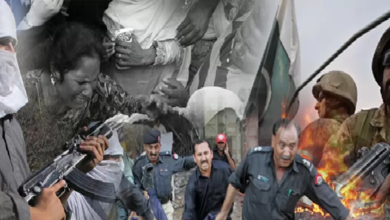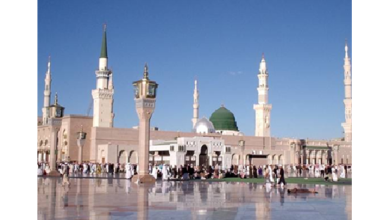TTP’s Media War: Challenges for Pakistan
The Intensifying Social Media War Against Pakistan
In recent months, Pakistan has witnessed a dramatic surge in attacks by the banned militant organisation Tehrik-i-Taliban Pakistan (TTP) against security forces. Concurrently, security forces have been conducting operations against the group.
An analysis of 2024 statistics reveals that TTP has claimed responsibility for 1,758 attacks on security forces and law enforcement personnel. According to TTP’s self-published figures and claims, these attacks have resulted in 1,284 fatalities and 1,661 injuries.
While TTP’s attacks have intensified, its propaganda media outlets have also expanded. Despite Pakistani authorities’ claims of successfully countering TTP, their efforts have not significantly impacted the organisation’s media operations. Before delving into TTP’s growing media propaganda and the challenges faced by the government in countering it, it is essential to understand the structure and functioning of TTP’s media network.
TTP’s dedicated media wing, ‘Umar Media,’ has expanded under the leadership of the organisation’s current chief, Noor Wali Mehsud. After assuming leadership in 2018, Noor Wali Mehsud consolidated splinter factions and forged alliances with several other militant groups.
Since the Taliban’s takeover of Afghanistan in 2021, Umar Media has intensified its activities and played a crucial role in the organisation’s recent surge in attacks. Named after Mullah Mohammad Omar, the founder of the Afghan Taliban, Umar Media operates under TTP’s so-called ‘Ministry of Information and Broadcasting.’
Umar Media produces audio, video, and text-based content in Urdu and Pashto, which is subsequently translated into English, Dari, Persian, and Arabic. Its output includes multiple video productions, daily radio broadcasts, a biweekly current affairs podcast, an Urdu magazine, and daily reports on TTP’s attacks and political statements.
This content is published on Umar Media’s official website and disseminated through the group’s designated social media accounts and encrypted messaging platforms such as WhatsApp and Telegram. Individuals affiliated with Umar Media frequently liaise with Afghan and Pakistani journalists to ensure widespread dissemination of TTP’s materials. Educated youth working for Umar Media monitor both local and international media coverage. The organisation has established Telegram and WhatsApp channels, which are followed by numerous Pakistani and Afghan journalists.
In 2021, Umar Media announced that individuals with writing skills could contribute Urdu-language articles for publication in its magazine by submitting them to a designated ID. This strategy closely aligns with the propaganda approach once adopted by the Afghan Taliban at the peak of their influence.
Notably, other militant organisations such as the so-called Islamic State and Al-Qaeda do not maintain similar media policies. However, in January 2024, TTP restructured Umar Media to enhance its sophistication, dynamism, and effectiveness.
Following the Taliban’s takeover of Afghanistan, TTP has not only expanded its media operations through Umar Media but also invested significantly in its propaganda efforts. According to a BBC Monitoring review, Umar Media produces a diverse range of content, with video being the most prominent format.
Umar Media publishes video, audio, and podcast series alongside Urdu and Pashto-language magazines. Additionally, the group releases daily statements on key developments, including brief claims of responsibility for attacks, often attributed to its spokesperson, Muhammad Khorasani.
In September 2023, Umar Media announced that it was regularly publishing four magazines, a podcast series, two daily lectures, and a weekly newsletter. Its short propaganda videos, aimed at inciting violence against Pakistani security forces and glorifying TTP’s militant activities, remain particularly noteworthy. Umar Media claims to produce 14 distinct video series.
Recently, TTP’s primary Urdu-language propaganda publication, the monthly magazine ‘Mujalla Taliban,’ has been released consistently, with significant improvements in both quality and design. Additionally, Umar Media frequently publishes a women’s magazine titled ‘Banat Khadija al-Kubra’ and a Pashto-language magazine called ‘Sadai Taliban.’ According to BBC Monitoring, the publication of ‘Sadai Taliban’ has faced delays in recent months, but its latest seventh issue was released on 4 March after a long hiatus.
There is no doubt that Pakistan faces significant challenges in countering TTP’s propaganda. The militant group leverages various social media platforms and encrypted messaging apps such as Twitter, Telegram, WhatsApp, and Signal to disseminate its messages, recruit fighters, and coordinate attacks. Regulating and gaining access to these platforms remains a formidable challenge for the Pakistani authorities. Social media companies do not always promptly respond to government requests for content removal, exacerbating the difficulty of curbing TTP’s digital influence.
The Pakistani government faces legal and technical challenges under international laws and policies when attempting to remove TTP-related content from social media platforms. Despite repeated requests, social media companies delay the removal of such content, arguing that their policies are more aligned with Western legal frameworks and that they must adhere to the regulations of international social media corporations. Taking advantage of this situation, the TTP creates new accounts to counter state efforts. Well-informed sources claim that this selective enforcement is a deliberate policy to harm Pakistan, as these regulations seem ineffective within Western countries themselves.
The presence of local sympathisers allows the TTP to continue its propaganda through various websites and social media groups. However, it is crucial to note that the technical support required to run these platforms is provided by companies based in Western countries, posing a significant challenge for the Pakistani state. Due to a lack of international cooperation, Western countries do not fully support Pakistan’s stance against terrorism, making effective global action against the TTP difficult.
As a result, in recent years, TTP attacks have intensified, along with an expansion of their media network. Social media and websites are used to claim responsibility for attacks. After every major incident, TTP’s media wing, Umar Media, releases detailed statements, often accompanied by videos and images, portraying their attacks as ‘victories’ and acts of ‘jihad.’ The TTP’s media operations and militant activities work hand in hand. Umar Media employs emotional rhetoric, religious references, and jihadist videos to recruit young individuals. Through video, audio, and written material, they attempt to lure new members into their ranks, encouraging them to join their militant cause. Their propaganda is produced in multiple languages to ensure maximum reach. The TTP also seeks international support and tries to strengthen its position by establishing connections with global jihadist networks such as Al-Qaeda and ISIS.
Formation and Objectives
Established in 2014 as the central media wing of the TTP, Umar Media’s primary objectives include promoting jihadist ideology, legitimising TTP attacks, fostering anti-state sentiments against the Pakistani military and government, and using modern media techniques for recruitment and fundraising.
Since 2020, Umar Media has been led by a commander named Muneeb, who was previously associated with Al-Qaeda’s media wing, Al-Sahab. Under its structure, different teams handle video production, audio content, written materials, and social media management. Several media hubs in Afghanistan provide support to various TTP factions.
Umar Media operates across different locations in Afghanistan, where content is developed. It is funded through secret financial sponsorships from international backers, support from extremist groups in Afghanistan, and illicit activities such as kidnappings for ransom. Following the Taliban’s takeover of Afghanistan in 2021, Umar Media gained greater freedom and access to resources. The TTP found safe havens, enabling them to expand their operations openly, while Umar Media adopted new propaganda strategies focused on religious messaging to garner support. Increased financial resources allowed for higher production quality and broader dissemination of content.
Evolution of Umar Media
The consolidation of various militant factions further strengthened Umar Media. The TTP refined its media strategies and relocated its centres to more secure areas within Afghanistan. After Pakistani airstrikes, the organisational structure was adjusted to ensure that their media campaigns remained unaffected.
Since 2021, the TTP has enhanced its use of modern technology, incorporating video animations, drone footage, and high-definition content in its propaganda. In response to Pakistani airstrikes and intelligence operations, Umar Media adapted by decentralising its operations into smaller, more discreet units. While the Taliban government officially denies supporting the TTP and other terrorist organisations, in practice, the TTP benefits from unofficial cooperation, allowing it to operate with relative freedom. As a result, the TTP increasingly portrays the Taliban’s victory as its own, using this narrative to recruit more individuals into its ranks.
International Connections
The TTP has also shaped its narrative around Taliban actions against ISIS in Afghanistan, attempting to attract disillusioned elements within the Taliban ranks. Umar Media has significantly upgraded its propaganda capabilities, producing a vast array of TTP speeches, religious discourses, jihadist anthems, proselytising content, online magazines, extremist literature, and ideological statements. Additionally, they release attack footage and video/audio messages from militants, indicating that significant planning and millions of dollars are being invested in their media operations.
Since the end of 2022, TTP’s media activities have intensified further, with desperate attempts to portray government actions as failures. Various narratives are being crafted to incite young people against the Pakistani government and military. Videos and social media campaigns are being run, and young minds are being manipulated through fake news and misinformation. TTP frequently uses fabricated reports and misleading videos on social media to challenge the state’s narrative. In recent times, this propaganda against the Pakistani government and security forces has become more systematic and dangerous.
In December 2022, the Pakistani government claimed to have destroyed the headquarters of Umar Media in Afghanistan’s Paktika province. However, with the assistance of its sponsors, TTP quickly adopted new methods to resume its activities. While this temporarily reduced its propaganda efforts, the organisation swiftly continued operations through alternative channels. Despite the setback, neither Umar Media nor TTP’s broader media network suffered significant disruption, and their propaganda persisted.
The complexity of digital platforms has made it increasingly difficult to completely eliminate TTP’s propaganda. The lack of international support, particularly the reluctance of social media companies to take swift action, remains a major challenge. Given the intricate nature of digital platforms, it is nearly impossible to fully remove content from social media, making it difficult to exercise complete control over digital spaces. Meanwhile, India openly supports groups like TTP to destabilise Pakistan.
On the other hand, the international community has not fully acknowledged Pakistan’s concerns. Despite India’s alleged backing of such groups, no global pressure has been exerted against it. The lack of support from the international community, particularly from Western nations, has hindered Pakistan’s counter-terrorism efforts. Western countries have yet to take any meaningful action against India, creating diplomatic challenges for Pakistan.
Reports have also emerged regarding internal conflicts within TTP, causing rifts among its factions and affecting its propaganda wing. Several videos and statements have been leaked, exposing security vulnerabilities within the group. TTP’s sub-groups are now focused on reviving their media networks.
Currently, TTP consists of over 72 factions, with Jamaat-ul-Ahrar being one of the most prominent. This faction has established its own media wing, ‘Ghazi Media’, which often issues statements different from TTP’s mainstream narrative. On various occasions, TTP has distanced itself from Jamaat-ul-Ahrar’s messages. Similarly, Lashkar-e-Islam and the Hafiz Gul Bahadur group have set up their own media channels.
China has urged Pakistan to take stricter measures against terrorists, as CPEC (China-Pakistan Economic Corridor) continues to face security threats. If such attacks persist, they could negatively impact CPEC projects. However, China is unlikely to intervene directly in Pakistan’s internal security affairs.
The key question remains: is the United States trying to penalise Pakistan for its defeat in Afghanistan? Is it exerting pressure to undermine the region’s most significant project, CPEC? Or, as some analysts suggest, are these efforts aimed at destabilising Pakistan’s nuclear capabilities? Various tactics are being employed at the international level to put Pakistan under defensive pressure.
Some experts believe that the ultimate objective behind fostering terrorism in Pakistan is to weaken its nuclear capability or force it to abandon its nuclear status. Negative propaganda about the security of Pakistan’s nuclear assets frequently appears in Western and Indian media. The so-called ‘Trio’—the US, India, and Israel—has long sought to dismantle Pakistan’s nuclear programme. Additionally, Pakistan has achieved a prominent position in global missile technology. Over the past year, the United States has imposed sanctions on two key companies supporting Pakistan’s missile programme, citing concerns over its growing capabilities and their potential impact on US national security.
The critical question is: can Pakistan win this media war against TTP, which is funded by foreign elements? TTP’s media propaganda network is now highly advanced, well-structured, and systematically organised. To counter it effectively, Pakistan must leverage modern digital technologies, cybersecurity measures, and international cooperation. For a robust response, Pakistan needs strong global support, advanced cyber defences, and state-of-the-art technology to combat this growing threat.






